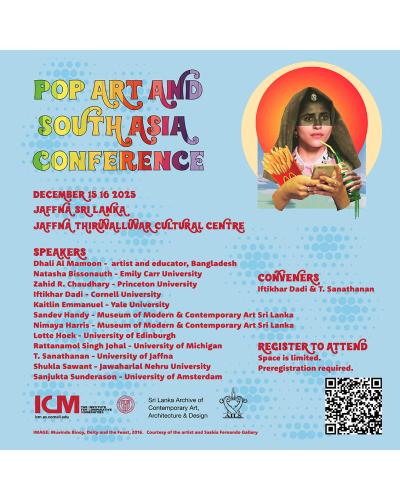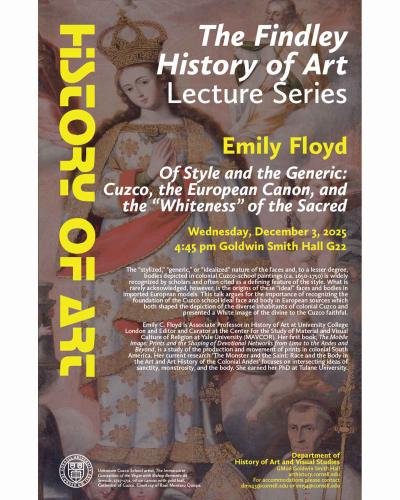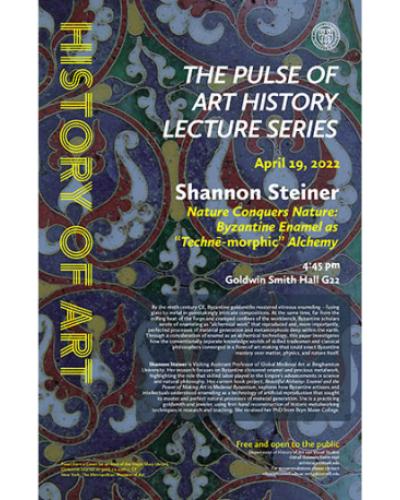The Pulse of Art History Lecture
Nature Conquers Nature: Byzantine Enamel as “Technē-morphic” Alchemy
Shannon Steiner
April 19, 2022, 4:45pm Goldwin Smith Hall G22
By the ninth century CE, Byzantine goldsmiths mastered vitreous enameling – fusing glass to metal in painstakingly intricate compositions. At the same time, far from the stifling heat of the forge and cramped confines of the workbench, Byzantine scholars wrote of enameling as “alchemical work” that reproduced and, more importantly, perfected processes of material generation and metamorphosis deep within the earth. Through a consideration of enamel as an alchemical technology, this paper investigates how the conventionally separate knowledge worlds of skilled tradesmen and classical philosophers converged in a form of art-making that could enact Byzantine mastery over matter, physics, and nature itself.
Shannon Steiner is Visiting Assistant Professor of Global Medieval Art at Binghamton University. Her research focuses on Byzantine cloisonné enamel and precious metalwork, highlighting the role that skilled labor played in the Empire’s advancements in science and natural philosophy. Her current book project, Beautiful Alchemy: Enamel and the Power of Making Art in Medieval Byzantium, explores how Byzantine artisans and intellectuals understood enameling as a technology of artificial reproduction that sought to master and perfect natural processes of material generation. She is a practicing goldsmith and jeweler, using first-hand reconstruction of historic metalworking techniques in both her research and teaching.
IMAGE CAPTION:Panel from a Cover for an Icon of the Virgin Mary (detail)Cloisonne enamel on gold, ca. 12th c. CENew York: The Metropolitan Museum of Art





